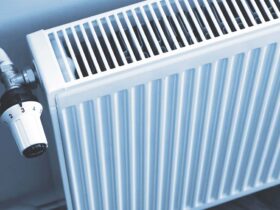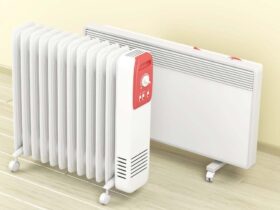A tire pressure sensor fault is an issue with the vehicle’s tire pressure monitoring system. The fault indicates a problem with the sensor that monitors the air pressure in the tires.
Maintaining proper tire pressure is essential for safe driving and optimal vehicle performance. When the tire pressure sensor is faulty, it may not accurately detect low or high tire pressure, leading to potential safety risks or decreased fuel efficiency. It is recommended to have the sensor checked and replaced if necessary by a qualified mechanic to ensure the tire pressure monitoring system functions correctly.
Regularly checking tire pressure manually can also help avoid issues caused by a faulty sensor.
Common Symptoms Of Tire Pressure Sensor Fault
If you are experiencing issues with your tire pressure, it could be a sign of a tire pressure sensor fault. These sensors are responsible for monitoring the air pressure in your tires and alerting you to any deviations from the recommended levels. Ignoring these symptoms can lead to safety hazards and affect your vehicle’s performance. In this article, we will discuss the common symptoms of a tire pressure sensor fault.
Warning Light Activation
One of the most obvious signs of a tire pressure sensor fault is the activation of the warning light on your dashboard. When the sensor detects that the tire pressure is below or above the recommended level, it sends a signal to the vehicle’s computer system, which then triggers the warning light to illuminate. This serves as a clear indicator that you should check your tire pressure and attend to any necessary adjustments. Ignoring this warning light can result in reduced fuel efficiency, decreased tire life, and compromised handling.

Inaccurate Readings
Another symptom of a tire pressure sensor fault is inaccurate readings on your tire pressure monitoring system (TPMS). You may find that the TPMS is displaying inconsistent or incorrect readings of your tire pressure. This can be frustrating as it may lead you to believe that your tire pressure is normal, when in fact, it is not. It is essential to address this issue promptly by having your sensors checked and recalibrated. Failure to do so can cause abnormal tire wear, decreased grip, and poor handling.
Tire Pressure Fluctuation
If you notice frequent fluctuations in your tire pressure, it may indicate a fault in the tire pressure sensor. The sensor may be showing inconsistent readings due to irregularities in its functioning. This can lead to a constant need for tire inflation or deflation, affecting the overall performance of your vehicle. It is crucial to have your tire pressure sensors inspected and repaired to prevent further damage and ensure accurate tire pressure monitoring.
Reduced Battery Life
A tire pressure sensor fault can also result in reduced battery life. These sensors require a small amount of power to operate, and if there is a fault, they may draw excessive power from the battery, draining it quickly. If you notice that your vehicle’s battery is dying faster than usual, it may be due to a faulty tire pressure sensor. Replacing or repairing the sensor can help restore your battery’s lifespan and prevent unexpected breakdowns.
Understanding The Importance Of Tire Pressure Sensors
Being aware of the condition of your vehicle’s tires is crucial for both your safety and your car’s performance. Tire pressure is a key factor that directly affects your driving experience, and that’s where tire pressure sensors come into play. Understanding the importance of tire pressure sensors can ensure that you maintain optimal tire pressure, keeping you safe on the road and improving your vehicle’s fuel efficiency.
Safety Factors
Tire pressure sensors contribute significantly to the overall safety of your vehicle. With these sensors installed, you’ll be alerted promptly if there is any deviation from the recommended tire pressure levels. Maintaining correct tire pressure helps prevent issues such as blowouts, excessive tire wear, and poor handling. By ensuring your tires are properly inflated, tire pressure sensors can reduce the risk of accidents caused by tire-related problems.
Fuel Efficiency Impact
Did you know that incorrect tire pressure can negatively impact your vehicle’s fuel efficiency? When your tires are overinflated or underinflated, your car has to work harder to move, which leads to increased fuel consumption. Tire pressure sensors monitor the pressure levels and notify you if they fall below or exceed the recommended range. By maintaining the correct tire pressure with the help of these sensors, you can improve your vehicle’s fuel efficiency, saving money on fuel costs and reducing your carbon footprint.
In conclusion, tire pressure sensors are a crucial component for both safety and fuel efficiency. By alerting you to any tire pressure faults, these sensors help keep you safe on the road and optimize your vehicle’s performance. It’s essential to pay attention to these sensors and take necessary actions to maintain the recommended tire pressure levels. This simple step can have significant long-term benefits for your driving experience and your wallet.

Diagnostic Steps To Identify The Issue
When your vehicle’s tire pressure sensor faults, it can lead to potential safety hazards and decreased fuel efficiency. Identifying the issue promptly is essential to maintain optimum performance and safety. Here are some essential diagnostic steps to identify the tire pressure sensor fault:
Checking Tire Pressure Manually
- Locate your vehicle’s recommended tire pressure in the owner’s manual or on the driver’s side door jamb.
- Use a tire pressure gauge to measure the pressure of each tire, comparing the reading to the recommended pressure.
- Top up or release air as necessary to match the recommended pressure, ensuring uniformity across all tires.
Inspecting For Physical Damage
- Visually inspect each tire for signs of physical damage, such as cracks, punctures, or bulges in the sidewall.
- Check for any visible damage to the tire pressure sensor, including corrosion or evidence of impact.
- Ensure the valve stems are intact and not damaged, as this can also lead to sensor faults.
Efficient Troubleshooting Techniques For Tire Pressure Sensor Fault
Experiencing a tire pressure sensor fault can be frustrating, especially when it comes to diagnosing the issue. However, with the right troubleshooting techniques, you can quickly identify and resolve the problem. In this article, we will explore two efficient methods: Resetting the Sensors and Replacing the Sensor Batteries.
Resetting The Sensors
If you notice a tire pressure sensor fault, the first troubleshooting technique is to reset the sensors. This process involves reprogramming the sensors to ensure accurate readings. Follow these steps to reset the sensors:
- Park your vehicle in a safe location, away from traffic.
- Locate the TPMS (Tire Pressure Monitoring System) reset button. Refer to your vehicle’s user manual if necessary.
- Once you’ve found the reset button, press and hold it for approximately three to five seconds. You may need to use a small tool, such as a pen or a paperclip, to press the button.
- Release the reset button and wait for the TPMS light to blink three times. This indicates that the sensors have been successfully reset.
- Finally, drive your vehicle for a short distance to allow the sensors to recalibrate.
Replacing The Sensor Batteries
If resetting the sensors doesn’t resolve the tire pressure sensor fault, the next troubleshooting technique is to replace the sensor batteries. Over time, the batteries in the sensors can weaken, resulting in faulty readings. Follow these steps to replace the sensor batteries:
- Start by identifying the faulty sensor. Most vehicles have individual sensors for each tire.
- Using a tire pressure sensor tool or a similar device, remove the faulty sensor from the tire valve stem.
- Once the sensor is removed, carefully pry open the casing to access the battery compartment.
- Replace the old battery with a new one of the same type and rating. Be sure to pay attention to the polarity markings.
- Close the casing and reattach the sensor to the tire valve stem using the tire pressure sensor tool.
- Repeat the process for any other faulty sensors.
- Once all the sensor batteries have been replaced, reset the sensors using the previous technique.
By following these efficient troubleshooting techniques, you can effectively address tire pressure sensor faults and maintain optimal tire performance and safety. Whether it’s resetting the sensors or replacing the batteries, these methods will help you keep your vehicle’s tire pressure monitoring system functioning properly.

Professional Tools And Services For Comprehensive Resolution
If you’re experiencing a tire pressure sensor fault, it’s crucial to address the issue promptly to ensure your safety and the performance of your vehicle. Fortunately, there are professional tools and services available to help you with a comprehensive resolution. These resources will help you diagnose the problem accurately and provide you with the solutions you need. Let’s take a closer look at two options you can consider: using an OBD-II scanner and seeking a mechanic’s assistance.
Using Obd-ii Scanner
An OBD-II scanner is a valuable tool that allows you to read the diagnostic trouble codes (DTCs) stored in your vehicle’s onboard computer system. It helps you identify the specific issue causing the tire pressure sensor fault. With this information, you can take the necessary steps to fix the problem efficiently. To use an OBD-II scanner:
- Locate the OBD-II port in your vehicle (usually found under the dashboard or near the steering wheel).
- Plug the scanner into the port and turn on your vehicle’s ignition.
- Follow the scanner’s instructions to read the DTCs related to the tire pressure sensor fault.
- Once you have the DTCs, research the codes or consult a professional for further guidance.
- Based on the diagnosis, you can decide if it’s a simple fix you can handle yourself or if you need additional help.
Seeking Mechanic’s Assistance
If you’re not comfortable diagnosing and resolving the tire pressure sensor fault on your own, seeking the assistance of a mechanic is a wise choice. Mechanics have the expertise and experience to identify and fix complex issues with precision. When you visit a mechanic, they will use their specialized tools and knowledge to diagnose and resolve the problem efficiently.
Here’s what you can expect when seeking a mechanic’s assistance:
- Schedule an appointment with a trusted mechanic or visit an auto repair shop.
- Explain the issue you’re experiencing with your tire pressure sensor.
- Allow the mechanic to perform a thorough inspection of your vehicle.
- Based on their findings, they will recommend the necessary repairs or replacements.
- Leave your vehicle in their capable hands, knowing that they will resolve the issue professionally.
Whether you choose to use an OBD-II scanner or seek a mechanic’s assistance, addressing the tire pressure sensor fault promptly is vital. These professional tools and services are designed to provide you with a comprehensive resolution, ensuring your vehicle’s safety and performance on the road.

Preventive Maintenance To Avoid Future Sensor Faults
Preventive maintenance is crucial to avoid future tire pressure sensor faults. Regular inspection and proper care of the sensors can help in maintaining their functionality and avoid costly repairs. Here are some essential preventive maintenance tips to keep your tire pressure sensors in top condition.
Regular Tire Inspections
Regular tire inspections are essential to ensure that the tire pressure sensors are functioning correctly. It is important to visually inspect the tires for any signs of damage or wear. Conducting regular checks for tire pressure using a reliable pressure gauge can help in detecting any fluctuations that could potentially lead to sensor faults.
Proper Sensor Care
Proper care of tire pressure sensors is essential to prolong their lifespan and prevent faults. When installing new tires or performing tire rotations, it is crucial to ensure that the sensors are handled and installed with care to avoid any damage. Additionally, maintaining the correct tire pressure according to the manufacturer’s recommendations can help in preventing unnecessary strain on the sensors.
Cost-effective Diy Fixes For Common Sensor Issues
Dealing with tire pressure sensor faults can be frustrating, especially when they start to impact the performance of your vehicle. Fortunately, there are cost-effective DIY fixes that can help you resolve common sensor issues without breaking the bank. In this article, we will discuss two essential DIY fixes that can save you time and money in the long run. These fixes include sealing air leaks and cleaning sensor components.
Sealing Air Leaks
Air leaks in your tire pressure sensor can cause inaccurate readings and trigger fault codes. This issue is often caused by worn-out valve stems or damaged sealing surfaces. Fixing an air leak may seem daunting, but it is a straightforward DIY repair.
- Inspect the valve stem: Start by inspecting the valve stem for any signs of wear or damage. If you notice any cracks or splits, it’s time to replace the valve stem.
- Replace the valve stem: Purchase a replacement valve stem from your local automotive store or online. Use a valve stem removal tool to remove the old valve stem and install the new one. Make sure to tighten it securely.
- Check the sealing surface: Next, check the sealing surface of the tire pressure sensor. Look for any signs of corrosion or damage. If necessary, clean the surface using a mild detergent and a soft cloth.
- Ensure proper sealing: Once the valve stem is replaced and the sealing surface is clean, reinstall the tire pressure sensor. Double-check the tightness to ensure a proper seal. This should alleviate any air leak issues and improve the sensor’s functionality.
Cleaning Sensor Components

Over time, dirt and debris can accumulate on the sensors and affect their performance. Cleaning the sensor components is a simple DIY fix that can restore accurate readings and prevent false alarms. Here’s how to clean your tire pressure sensor:
- Remove the sensor: Begin by removing the tire pressure sensor from the valve stem. Use a wrench to loosen the nut and carefully detach the sensor.
- Clean the sensor: Use a can of compressed air to blow away any dirt or debris from the sensor. Take caution not to damage delicate components during the cleaning process.
- Inspect for damage: While cleaning, inspect the sensor for any signs of damage. Look for cracked or broken parts that may require replacement.
- Reinstall the sensor: Once the sensor is clean and free of damage, reattach it to the valve stem. Make sure the nut is tightened securely but avoid over-tightening.
By sealing air leaks and cleaning sensor components on your own, you can tackle common tire pressure sensor issues effectively and affordably. These cost-effective DIY fixes offer a convenient solution to keep your sensors functioning optimally. However, if you are uncertain or uncomfortable with performing these repairs yourself, seek assistance from a professional mechanic to ensure the task is completed correctly.
Ensuring Proper Functionality After Sensor Troubleshooting
Once you’ve addressed any faults with your tire pressure sensors, it’s important to ensure that their functionality is fully restored. By taking a few additional steps, you can make sure that your sensors are working correctly and that your vehicle’s tire pressure is properly maintained. Testing the sensors after repairs and maintaining ideal tire pressure are crucial for optimal performance.
Testing Sensors After Repairs
After troubleshooting and repairing any issues with your tire pressure sensors, it’s crucial to test them to ensure they are functioning properly. Here’s a simple step-by-step process you can follow to test the sensors:
- Start by inflating the tires to the recommended pressure levels.
- Turn on the ignition and allow the sensors to initialize.
- Using a tire pressure gauge, check the pressure of each tire individually.
- Compare the readings on the gauge with the readings displayed on the vehicle’s dashboard.
- If the readings match or are within the recommended range, your sensors are functioning correctly.
- If there is a significant difference in the readings, there may be an issue with the sensors that requires further investigation.
Maintaining Ideal Tire Pressure
Proper tire pressure maintenance is crucial for both the longevity of your tires and the overall performance of your vehicle. Here are some steps to help you maintain ideal tire pressure:
- Regularly check your tire pressure using a reliable tire pressure gauge.
- Refer to the vehicle’s manual or the sticker located on the driver’s side door jamb for the recommended tire pressure levels.
- Inflate or deflate the tires as necessary to achieve the proper pressure.
- Check your tire pressure at least once a month and before long trips.
- Avoid overinflating or underinflating the tires, as this can lead to uneven wear and decreased fuel efficiency.
- Consider investing in a tire pressure monitoring system (TPMS) that provides real-time monitoring and alerts for any deviations from the ideal pressure levels.
By following these steps and maintaining proper tire pressure, you can ensure that your tire pressure sensors function optimally, allowing for a safer and more efficient driving experience.
Frequently Asked Questions On Tire Pressure Sensor Fault
How Do You Fix A Tire Pressure Sensor Fault?
To fix a tire pressure sensor fault, check tire pressure and reset the sensor. If the issue persists, replace the sensor or seek professional help. Regular maintenance is key to preventing sensor faults.
Can You Drive With Tire Pressure Sensor Fault?
Yes, you can drive with a tire pressure sensor fault. However, it’s important to note that the sensor is responsible for monitoring tire pressure, so you won’t receive warnings if the pressure is low. Regularly check your tire pressure manually to ensure safety and proper vehicle performance.
How Much Does It Cost To Fix A Tire Pressure Sensor Fault?
The cost to fix a tire pressure sensor fault varies depending on the type of sensor and the extent of the issue. Generally, it can range from $50 to $250, including the cost of labor and parts.
Conclusion
Addressing tire pressure sensor faults is crucial for vehicle safety and performance. Regular maintenance and quick intervention can prevent potential issues and ensure a smooth driving experience. By staying alert and taking proactive measures, drivers can avoid unexpected breakdowns and potential safety hazards caused by faulty tire pressure sensors.






Leave a Reply